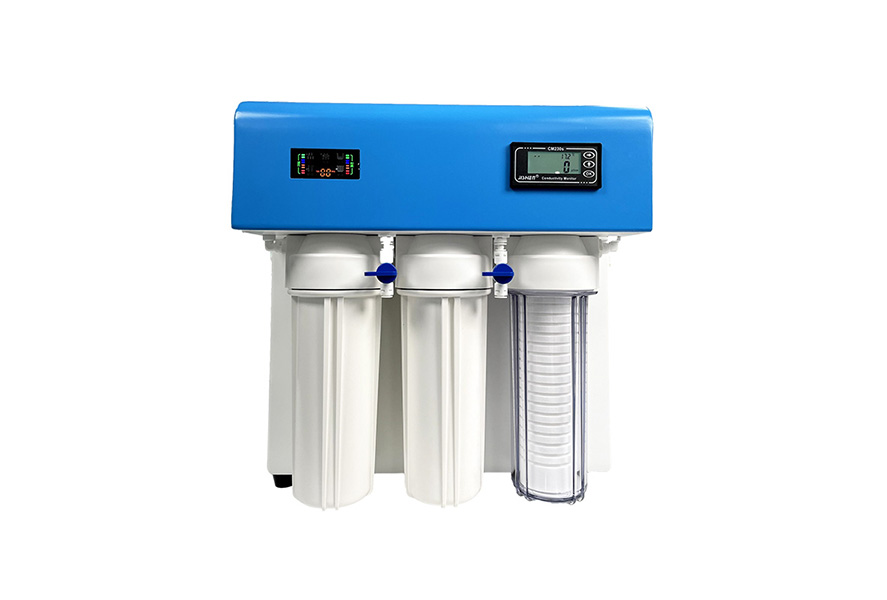The Shanghai Yetuo basic ultrapure water machine usually adopts multiple treatment steps to remove impurities and pollutants from the water, ensuring the high purity of the final product water. The working principle of its basic ultrapure water machine includes the following key steps:
1、 Preprocessing:
Activated carbon filtration: removes chlorine, odors, organic matter, and other large particulate impurities from water.
Precipitation and filtration: Remove suspended particles and sediment from water through precipitation and mechanical filtration.
2、 Reverse osmosis (RO):
Water passes through a reverse osmosis membrane, utilizing the characteristics of a semi permeable membrane to remove most impurities such as dissolved salts, fine particles, viruses, and organic matter from the water. The reverse osmosis process is a core step in the production of ultrapure water, which can reduce the conductivity of water.
3、 Deionization (DI):
By using ion exchange resin to remove residual ions and trace impurities from water, the purity of water can be further improved. During the ion exchange process, the resin undergoes an exchange reaction with ions in water to remove them.
4、 UV Kill Jun:
In some ultrapure water machines, ultraviolet light tubes are installed to further kill fine particles and viruses that may exist in the water, ensuring complete water quality.
5、 Storage and Recycling:
The processed ultrapure water is stored in the designated water tank to avoid secondary pollution. Water can be recycled before use to maintain its purity.
6、 Monitoring system:
Ultra pure water machines are usually equipped with monitoring systems that can detect water quality in real time (such as conductivity, pH value, etc.) to ensure that the quality of the produced water meets the requirements.
Through the working principle steps of these basic ultrapure water machines, they can remove various impurities from water, provide high-purity ultrapure water, and meet the needs of laboratory and industrial production.


 Alibaba Store
Alibaba Store Tmall Store
Tmall Store Jingdong Sstore
Jingdong Sstore







